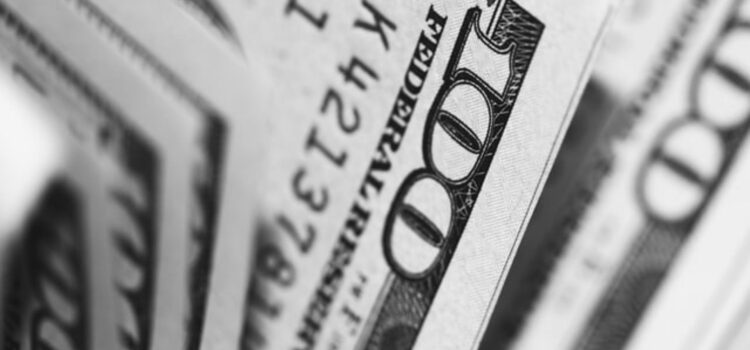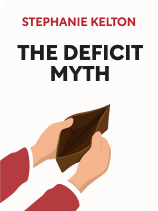

This article is an excerpt from the Shortform book guide to "The Deficit Myth" by Stephanie Kelton. Shortform has the world's best summaries and analyses of books you should be reading.
Like this article? Sign up for a free trial here .
Are you looking for an explanation of modern monetary theory? What criteria must a nation satisfy to be considered a monetary sovereign?
The short version of modern monetary theory is that there are some nations (like the United States) that are unconstrained in their power to spend money because their currencies satisfy certain criteria. MMT is controversial and is criticized by economists.
Continue below if you want to learn more about modern monetary theory, explained with analysis.
What Is Modern Monetary Theory?
In this article, when we explain modern monetary theory, we will be using the common acronym MMT. MMT is a controversial and iconoclastic economic theory holding that nations like the United States, Canada, the United Kingdom, and Japan (to name just a few) are almost entirely unconstrained in their power to spend—regardless of how much revenue they receive in taxes. This is because these nations are what MMT proponents call monetary sovereigns: They are monetary sovereigns because their currencies satisfy the following criteria:
- They are fiat currencies that are not tied to the value of some finite physical commodity like gold or silver.
- They are issued solely by the government’s monetary authority—that is, they are not controlled by some external entity over which the government has no control (as in the case of the euro, which is issued by the European Central Bank, not by the governments that use it), nor are they pegged in a fixed ratio to a foreign currency over which the government has no control (as is the case with Caribbean countries like Aruba, the Bahamas, Barbados, and Bermuda, which stabilize their currencies by maintaining fixed exchange rates with the U.S. dollar).
Monetary sovereigns, according to MMT, have the ability to create their own currency and issue it in almost-unlimited quantities. Functionally, this means that they cannot “run out” of money, nor can they ever lack the necessary funds to finance whatever the government wishes to do—whether that’s establishing a universal health care system, a jobs guarantee, or increased military spending.
MMT takes this argument a step further, arguing that taxes levied on private individuals and businesses don’t exist to provide “revenue” that “pays for” government spending—instead, all money in private circulation is really just the money that the government chose not to tax. Taxes instead exist to create an incentive for the population to demand dollars—and, in the process of earning those dollars, to engage in socially beneficial activities (like creating jobs, providing health care, and educating children).
Intellectual leaders of the MMT school include the economist and hedge fund manager Warren Mosler; economist and academic L. Randall Wray; and economist and activist Bill Mitchell. The theory has been criticized by mainstream economists such as Nobel winner Paul Krugman, who argues that MMT overstates the usefulness of fiscal policy (government taxing and spending) and ignores the power of monetary policy (managing the money supply through controlling interest rates). In particular, MMT critics argue that when interest rates are above zero (meaning the monetary authority has room to maneuver to bring them lower), full employment can be achieved by lowering interest rates without the need for high deficits. They also argue that high deficits will, over time, lead to high interest rates, which will have the effect of damping private sector investment.

———End of Preview———
Like what you just read? Read the rest of the world's best book summary and analysis of Stephanie Kelton's "The Deficit Myth" at Shortform .
Here's what you'll find in our full The Deficit Myth summary :
- A look at national debt through the lens of Modern Monetary Theory
- How public discourse about national debts and deficits gets the facts wrong
- Why MMT says the U.S. government could finance any program it wishes to create






